Injuries in alpine summer sports - types, frequency and prevention: a systematic review
- PMID: 35501847
- PMCID: PMC9063189
- DOI: 10.1186/s13102-022-00468-4
Injuries in alpine summer sports - types, frequency and prevention: a systematic review
Abstract
Introduction: Summer alpine sports, including mountain biking, hiking and airborne pursuits, have experienced a recent surge in popularity. Accordingly, trauma associated with these activities has increased. There is a scarcity of literature exploring clinical aspects surrounding injuries. Specifically, no single article provides a general overview, as individual studies tend to focus on one particular sport. In the present study, we performed a systematic literature review to summarize existing knowledge and explore the potential for prevention and clinical decision making in this group.
Method: Literature searches were performed using the PubMed and Scopus database for the most commonly ventured sports associated with injury: mountain biking, climbing, airborne sports, paragliding, and base jumping. From this search, studies were identified for qualitative and quantitative analyses. These searches were done according to PRISMA guidelines for systematic reviews. Studies were then analyzed regarding epidemiology of injuries, relevant anatomical considerations and prevention strategies were discussed.
Results: A broad spectrum of injury sites and mechanisms are seen in mountain biking, climbing or airborne sports. Mountain biking related injuries commonly involve the upper extremity, with fractures of the clavicle being the most common injury, followed by fractures of the hand and wrist. Scaphoid fractures remain of paramount importance in a differential diagnosis, given their often subtle clinical and radiological appearance. Paragliding, skydiving, and base jumping particularly affect transition areas of the spine, such as the thoracolumbar and the spinopelvic regions. Lower limb injuries were seen in equal frequency to spinal injuries. Regarding relative risk, mountain biking has the lowest risk for injuries, followed by climbing and airborne sports. Male alpinists are reported to be more susceptible to injuries than female alpinists. Generally, the literature surrounding hiking and water-related mountain sports is insufficient, and further work is required to elucidate injury mechanisms and effective preventative measures. A helmet seems to decrease the likelihood of face and head injuries in mountain sports and be a meaningful preventive measurement.
Keywords: Airborne sport; Alpine injuries; Alpine sport; Mountain bike; Summer sports; Trauma.
© 2022. The Author(s).
Conflict of interest statement
The authors declare that they have no competing interests.
Figures



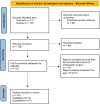
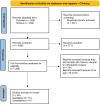
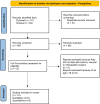
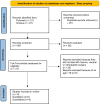
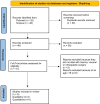

Similar articles
-
Mortality in Different Mountain Sports Activities Primarily Practiced in the Summer Season-A Narrative Review.Int J Environ Res Public Health. 2019 Oct 15;16(20):3920. doi: 10.3390/ijerph16203920. Int J Environ Res Public Health. 2019. PMID: 31618960 Free PMC article. Review.
-
Mountain Biking Injuries.Curr Sports Med Rep. 2017 Nov/Dec;16(6):404-412. doi: 10.1249/JSR.0000000000000429. Curr Sports Med Rep. 2017. PMID: 29135638 Review.
-
Mountain biking injuries: an update.Sports Med. 2002;32(8):523-37. doi: 10.2165/00007256-200232080-00004. Sports Med. 2002. PMID: 12076178 Review.
-
Sex- and Age-Specific Analysis of Mountain Biking Injuries: A 10-Year Review of National Injury Data.Orthop J Sports Med. 2025 Jan 30;13(1):23259671241305396. doi: 10.1177/23259671241305396. eCollection 2025 Jan. Orthop J Sports Med. 2025. PMID: 39886262 Free PMC article.
-
Complex shoulder girdle injuries following mountain bike accidents and a review of the literature.BMJ Open Sport Exerc Med. 2016 Jan 11;2(1):e000042. doi: 10.1136/bmjsem-2015-000042. eCollection 2016. BMJ Open Sport Exerc Med. 2016. PMID: 27900147 Free PMC article.
Cited by
-
A systematic review protocol of injuries and illness across all the competitive cycling disciplines, including track cycling, mountain biking, road cycling, time trial, cyclocross, gravel cycling, BMX freestyle, BMX racing, e-sport, para-cycling and artistic cycling.Front Sports Act Living. 2024 Oct 25;6:1385832. doi: 10.3389/fspor.2024.1385832. eCollection 2024. Front Sports Act Living. 2024. PMID: 39526252 Free PMC article.
-
The hidden value of MRI: modifying treatment decisions in C-spine injuries.Scand J Trauma Resusc Emerg Med. 2024 Jul 22;32(1):63. doi: 10.1186/s13049-024-01235-9. Scand J Trauma Resusc Emerg Med. 2024. PMID: 39039608 Free PMC article.
-
Answer to the Letter to the Editor of Y. Ai et al. concerning "Anterior thoracolumbar column reconstruction with the vertebral body stent-safety and efficacy" by Oswald, K.A.C., et al. (Eur Spine J [2023]: doi: 10.1007/s00586-023-07537-3).Eur Spine J. 2023 Oct;32(10):3692-3693. doi: 10.1007/s00586-023-07852-9. Epub 2023 Aug 4. Eur Spine J. 2023. PMID: 37542010 No abstract available.
-
What Factors Influence Surgeons in Decision-Making in Thoracolumbar Burst Fractures? A Survey-Based Investigation of a Panel of Spine Surgery Experts.Global Spine J. 2024 Feb;14(1_suppl):62S-65S. doi: 10.1177/21925682231211286. Global Spine J. 2024. PMID: 38324596 Free PMC article.
-
The Influence of Recreational Hiking on the Prevalence of Cardiovascular and Psychiatric Diseases Among Population of Republic of Serbia.Healthcare (Basel). 2025 Mar 20;13(6):680. doi: 10.3390/healthcare13060680. Healthcare (Basel). 2025. PMID: 40150530 Free PMC article.
References
-
- SAC, S.A.-C. Bergnotfälle Schweiz 2019. 2019; Available from: https://www.sac-cas.ch/fileadmin/Ausbildung_und_Wissen/News/2019/2020030....

